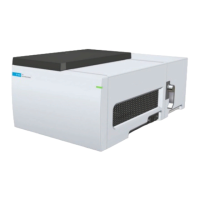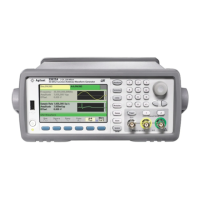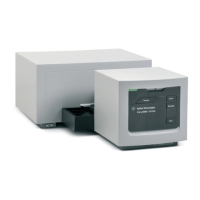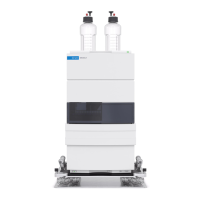93
Chapter 3 Features and Functions
Output Configuration
3
The table below shows which output functions are allowed with
modulation, sweep, and burst. Each “
” indicates a valid combination
. If
you change to a function that is not allowed with modulation, sweep, or
burst, then the modulation or mode is turned off.
• Function Limitations: If you change to a function whose maximum
frequency is less than that of the current function, the frequency is
adjusted to the maximum value for the new function. For example,
if you are currently outputting a 30 MHz sine wave and then change
to the ramp function, the waveform generator will automatically
adjust the output frequency to 200 kHz (the upper limit for ramps).
• Amplitude Limitations: If you change to a function whose maximum
amplitude is less than that of the current function, the amplitude is
automatically adjusted to the maximum value for the new function.
This may occur when the output units are Vrms or dBm due to the
differences in crest factor for the various output functions.
For example, if you output a 5 Vrms square wave (into 50 ohms) and
then change to the sine wave function, the waveform generator will
automatically adjust the output amplitude to 3.536 Vrms (the upper
limit for sine in Vrms).
• The Amplitude and Offset cannot be set such that they combine to
exceed the instrument’s capability. Whichever one you set last in this
situation will be modified to remain within the instrument’s limits.
Carrier AM FM PM FSK BPSK PWM Sum Burst Sweep
Sine and Square
Pulse
Triangle and Ramp
Gaussian Noise
(a)
PRBS
Single Arb
(b)
(b)
Sequenced Arb
(a) Gated burst only
(b) Applies to sample clock, not whole waveform
